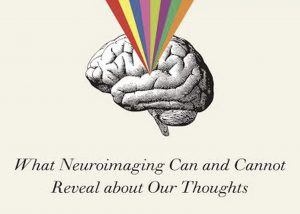Angela Chen in The Verge:
 In 2007, The New York Times published an op-ed titled “This is Your Brain on Politics.” The authors imaged the brains of swing voters and, using that information, interpreted what the voters were feeling about presidential candidates Hillary Clinton and Barack Obama.
In 2007, The New York Times published an op-ed titled “This is Your Brain on Politics.” The authors imaged the brains of swing voters and, using that information, interpreted what the voters were feeling about presidential candidates Hillary Clinton and Barack Obama.
“As I read this piece,” writes Russell Poldrack, “my blood began to boil.” Poldrack is a neuroscientist at Stanford University and the author of The New Mind Readers: What Neuroimaging Can and Cannot Reveal about Our Thoughts (out now from Princeton University Press). His research focuses on what we can learn from brain imagining techniques such as fMRI, which measures blood activity in the brain as a proxy for brain activity. And one of the clearest conclusions, he writes, is that activity in a particular brain region doesn’t actually tell us what the person is experiencing.
The Verge spoke to Poldrack about the limits and possibilities of fMRI, the fallacies that people commit in interpreting its results, and the limits of its widespread use. This interview has been lightly edited for clarity.
More here.
